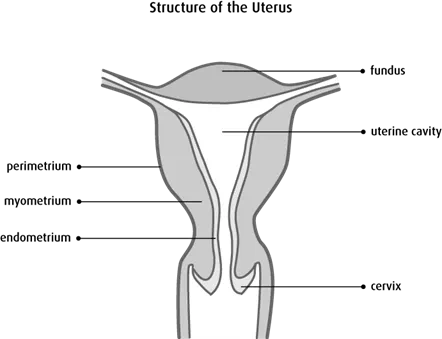Stages of uterine cancer
Staging describes or classifies a cancer based on how much cancer there is in the body and where it is when first diagnosed. This is often called the extent of cancer. Information from tests is used to find out the size of the tumour, which parts of the organ have cancer, whether the cancer has spread from where it first started and where the cancer has spread. Your healthcare team uses the stage to plan treatment and estimate the outcome (your prognosis).
The most common staging system for uterine cancer is the FIGO system. The FIGO system is used to stage endometrial carcinoma, uterine carcinosarcoma and uterine sarcoma. For these types of uterine cancer, there are 4 stages. Often the stages 1 to 4 are written as the Roman numerals I, II, III and IV. Generally, the higher the stage number, the more the cancer has spread. Talk to your doctor if you have questions about staging.

When describing the stage, doctors may use the words local, regional or distant. Local means that the cancer is only in the uterus and has not spread to other parts of the body. Regional means close to the uterus or around it, including lymph nodes in the pelvis and lymph nodes around the aorta (a large artery that carries blood away from the heart). Distant means in a part of the body farther from the uterus.
Find out more about staging cancer.
Endometrial carcinoma and uterine carcinosarcoma
Doctors use the following FIGO stages for endometrial carcinoma and uterine carcinosarcoma. The FIGO system does not include stage 0 (
Stage 1A
The tumour is only in the inner lining of the uterus (called the endometrium) or it has grown less than halfway through the muscle layer of the uterus wall (called the myometrium).
Stage 1B
The tumour has grown halfway or more than halfway into the myometrium.
Stage 2
The tumour has grown into the cervix.
Stage 3A
The tumour has grown into the outer surface of the uterus (called the uterine serosa) or the fallopian tubes, ovaries or their supporting ligaments.
Stage 3B
The tumour has grown into or spread to the vagina or tissues next to the cervix and uterus (called the parametria).
Stage 3C
The cancer has spread to lymph nodes in the pelvis (called pelvic lymph nodes) or to lymph nodes around the aorta (called para-aortic lymph nodes).
Stage 4A
The tumour has grown into the lining of the bladder or intestines.
Stage 4B
The cancer has spread to other parts of the body (called distant metastasis), such as to the lungs, liver or bone. This is also called metastatic cancer.
Uterine sarcoma
Doctors use the following FIGO stages for uterine leiomyosarcoma and endometrial stromal sarcoma.
Stage 1A
The tumour is only in the uterus and is not larger than 5 cm.
Stage 1B
The tumour is only in the uterus and is larger than 5 cm.
Stage 2A
The tumour has grown into the fallopian tubes, ovaries or their ligaments.
Stage 2B
The tumour has grown into other tissues in the pelvis.
Stage 3A
The tumour has grown into 1 area of the abdomen.
Stage 3B
The tumour has grown into 2 or more areas of the abdomen.
Stage 3C
The cancer has spread to lymph nodes in the pelvis or to lymph nodes around the aorta.
Stage 4A
The tumour has grown into the bladder or rectum.
Stage 4B
The cancer has spread to other parts of the body (called distant metastasis), such as to the lungs, liver or bone. This is also called metastatic cancer.
Recurrent uterine cancer
Recurrent uterine cancer means that the cancer has come back after it has been treated. If it comes back in the same place that the cancer first started, it’s called local recurrence. If it comes back in tissues or lymph nodes close to where it first started, it’s called regional recurrence. It can also recur in another part of the body. This is called distant metastasis or distant recurrence.
